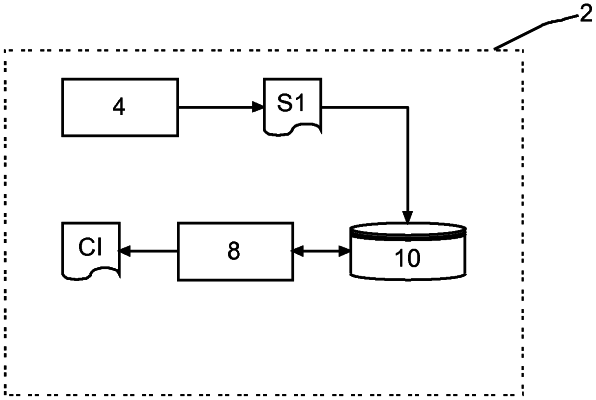| CPC A61B 5/02028 (2013.01) [A61B 5/021 (2013.01); A61B 5/4821 (2013.01); A61B 5/4848 (2013.01); A61B 5/725 (2013.01); G16H 50/50 (2018.01)] | 4 Claims |

|
1. Cardiac device for real-time cardiovascular monitoring carried out in anaesthesia and intensive care characterised in that the device comprises a memory arranged for receiving haemodynamic data, and a computer arranged for applying a cardiovascular model comprising a cardiac model and an arterial and venous blood circulation model based on the haemodynamic data received in the memory, and for deriving therefrom at least one cardiac activity indicator (CI), wherein the computer is arranged for computing a cardiac activity indicator (CI), by applying a cardiovascular model to compute an arterial pressure value and a cardiac output value that are theoretical, and by applying at least one correction function based on a difference between the arterial pressure value and the cardiac output value that are theoretical and the haemodynamic data received in the memory.
|
|
4. Cardiac monitoring method for real-time cardiovascular monitoring carried out in anaesthesia and intensive care comprising:
receiving haemodynamic data,
applying, with a computer, a cardiovascular model comprising a cardiac model and an arterial and venous blood circulation model to the haemodynamic data, and deriving therefrom at least one cardiac activity indicator (CI), and
computing, with the computer, a cardiac activity indicator (CI), by applying a cardiovascular model to compute an arterial pressure value and a cardiac output value that are theoretical, and by applying at least one correction function based on a difference between the arterial pressure value and the cardiac output value that are theoretical and haemodynamic data, wherein the at least one correction function is arranged to adjust the cardiovascular model to a patient.
|